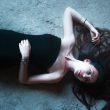Dreads, also known as locs or dreadlocks, are a very popular hairstyle for men. Dreadlocks are formed by braiding and locking hair. Some people wear them as a fashion statement while others choose to have their hair dreadlocked for religious reasons. It’s difficult to decide which of these styles is right for you. Read on to learn more about this popular style.
dreadlocks are a hairstyle
Dreadlocks, also known as locs or dreads, are a type of hairstyle. Dreadlocks are formed by braiding and locking your hair. These styles can be very revealing, allowing you to show off your hair’s natural beauty. But you should be aware of dreadlock’s disadvantages before you choose to try them out. Read on to find out more.
Dreadlocks are not a new hairstyle. The style actually has a long history. In fact, the style is as old as the Egyptian mummies. Moreover, the earliest written evidence of locs comes from India’s Vedic scriptures. These texts depict the deity Shiva sporting the style. So, the hairstyle is as old as 2,500BCE. But not everyone can grow locs as long as their natural hair.
Dreadlocks have become common amongst many people. Though it was once associated with countercultural groups, dreadlocks are no longer a fad. It is believed that the earliest depictions of dreadlocks date back to over three thousand years. Ancient civilizations such as the Egyptians and Greeks also wore this hairstyle. It is also widely practiced in some parts of Australia and the Near East.
Dreadlocks can be worn with various accessories and adornments. It’s a hairstyle that is universally appealing and transcends demographics and cultures. As with any other hairstyle, dreadlocks are different on different heads. Some textures are curlier than others and naturally lock more quickly. However, there are no strict rules. Only the right techniques and proper care can give you beautiful dreadlocks.
However, cultural appropriation is a real issue. Often, white people are accused of cultural appropriation because their hairstyle is associated with African American culture. Many people claim this practice perpetuates the negative stereotypes surrounding black people. In addition to being unfit for the workplace, dreadlocks are also perceived as culturally inappropriate. Luckily, they’ve been around for thousands of years in various societies.
Dreadlocks are widely associated with reggae culture, but they have many historical roots. Dreadlocks have spiritual meanings. The Hindus call them Jataan, and believe they’re the hair of God. In Islam, dreadlocks are associated with detachment from vanity. In addition to religious and cultural significance, dreadlocks are also associated with Rastafarian culture.
They are a sign of African identity
The term “dreadlock” originates in the Rastafarian culture. According to Rastafarians, locks are symbols of African identity. They also represent separation from Babylon, a historically white-European imperialist structure that has oppressed blacks since the beginning of time. Feminista Jones, a black activist and former lock wearer, has a strong opinion about the trend. While she doesn’t like the way dreads are used on white people, she is not sure if it is cultural appropriation.
The modern connotation of dreads is religious, originating from the Rastafarian movement. The Rastafarians were known for wearing uncombed, uncut hair. They believed that this was a way to differentiate their culture from the culture of the dominant white society. As such, they regarded dreadlocks as a sacred sign of their identity. They were also regarded as a religious vow to separate themselves from the outside world.
They are a symbol of separation from Babylon
Despite its modern-day associations, dreads have a long and storied history. They symbolize separation from Babylon and were once the hair of Jeremiah, the prophet of God. During his lifetime, Jeremiah wore his hair in dreads, similar to the dreads of an afro. This practice continues today and has been a symbol of separation from Babylon for thousands of years.
They are a popular hairstyle for men
Dreads are a fashionable hairstyle that can be customized to meet a man’s personal style. Dreadlocks can be spiky, smooth, or a combination of both. This type of hairstyle requires high maintenance, but it can also look fabulous. This style is popular among athletes and has been modeled by celebrities, including Michael B. Jordan. Men can also wear their dreads in a man bun.
Dreadlocks have long hair and can be twisted into many different styles. This hairstyle is typically secured in place by elastic bands. Dread wax is applied to the ends to make them twist easily. To maintain this look, use a natural shampoo, conditioning products, and styling products. You can also use special dreadlock wax to keep your dreadlocks looking their best. It is important to wash your dreads regularly.
Dreads are a versatile and stylish hairstyle for men. Men can wear dreadlocks in a variety of styles, from curly to loose and straight. They also look great with classic styles such as a high ponytail or topknot. Getting your dreads professionally styled can add a touch of class to your look. And once you’ve mastered this hairstyle, you can add accessories or beads to make it even more unique.
Dreads are a stylish and versatile hairstyle that is often recommended for guys with self-confidence. Some guys choose to dye their dreads teal. Then they shave their sides and fade them to blend in with their facial hair. They can even confuse the look with extra texture. If you’re not sure, try an ombre style. You’ll be amazed at how stylish and versatile dreadlocks can make you look.
Dreads can be neat or messy. A dreadlock hairstyle for men can give you a natural, edgy look. A man can go as dramatic or as minimal as he wants. You can also choose to go for a more symmetrical dreadstyle. However, dreadlocks for men are not for everyone. For those with fine hair, it may not be the best idea for you.
Podobne tematy




